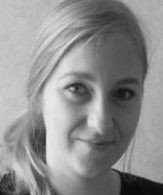Previous page
 Liane SCHMIDT
PhD, CR2, INSERM
Team "Control- Interoception – Attention"
https://sites.google.com/view/icm-cia-team
https://orcid.org/0000-0002-4159-9705
Liane SCHMIDT
PhD, CR2, INSERM
Team "Control- Interoception – Attention"
https://sites.google.com/view/icm-cia-team
https://orcid.org/0000-0002-4159-9705
 Liane SCHMIDT
PhD, CR2, INSERM
Team "Control- Interoception – Attention"
https://sites.google.com/view/icm-cia-team
https://orcid.org/0000-0002-4159-9705
Liane SCHMIDT
PhD, CR2, INSERM
Team "Control- Interoception – Attention"
https://sites.google.com/view/icm-cia-team
https://orcid.org/0000-0002-4159-9705
Biography
I received my Ph.D. in cognitive neuroscience at the University Pierre and Marie Curie in Paris in the team of Mathias Pessiglione and then trained as a postdoctoral researcher at the psychology department of Columbia University in New York in the research teams of Daphna Shohamy and Tor D. Wager, and at the Marketing area of INSEAD in Fontainebleau working with Hilke Plassmann and Pierre Chandon. In 2017 I started a PI position at INSERM (National Institute for Health and Research) as a tenured researcher affiliated with the Paris Brain Institute (ICM), where started my research team the Control-Interoception-Attention - CIA team, in 2019.
Research work
My research is directed toward understanding how a person's beliefs, mindsets, expectancies, and auto-suggestions influence her motivation, decision-making, interoception, and responsiveness to medical treatment. I am combining tools from cognitive neuroscience such as functional magnetic resonance imaging, behavioral testing, and computational modeling to harness the putative neurocognitive mechanisms that give rise to expectancy and mindset effects in both healthy participants and patients with psychiatric diseases such as depression and autism.Publications
- Schmidt, L., Tusche, A. Manoharan, N., Hutcherson, C., Hare, T. and Plassmann, H.* (2018), “Neuroanatomy of the vmPFC and dlPFC Predicts Individual Differences in Cognitive Regulation During Dietary Self-Control Across Regulation Strategies”, Journal of Neuroscience, 38(25), 5799-5806.
- Schmidt, L., Skvortsova, V., Kullen, C., Weber, B., & Plassmann, H. (2017). How context alters value: The brain’s valuation and affective regulation system link price cues to experienced taste pleasantness. Scientific Report, Scientific Reports, 7, 8098.
- L. Schmidt, T.D. Wager, D. Shohamy: Mind matters: Placebo enhances reward learning in Parkinson’s disease. Nature Neurosciences 17, 1793-1797 (2014);
- L. Schmidt, B. Forgeot d’Arc, G. Lafargue, D. Galanaud, V. Czernecki, D. Grabli, M. Schüpbach, A. Hartmann, R. Lévy, B. Dubois and M. Pessiglione: Disconnecting force from money: the effects of basal ganglia damage on incentive motivation. Brain 131, 1303-10 (2008);
- M. Pessiglione, L. Schmidt, B. Draganski, R. Kalisch, H. Lau, R.J. Dolan, C.D. Frith: How the Brain Translates Money into Force: A Neuroimaging Study of Subliminal Motivation. Science 316, 904 (2007);


